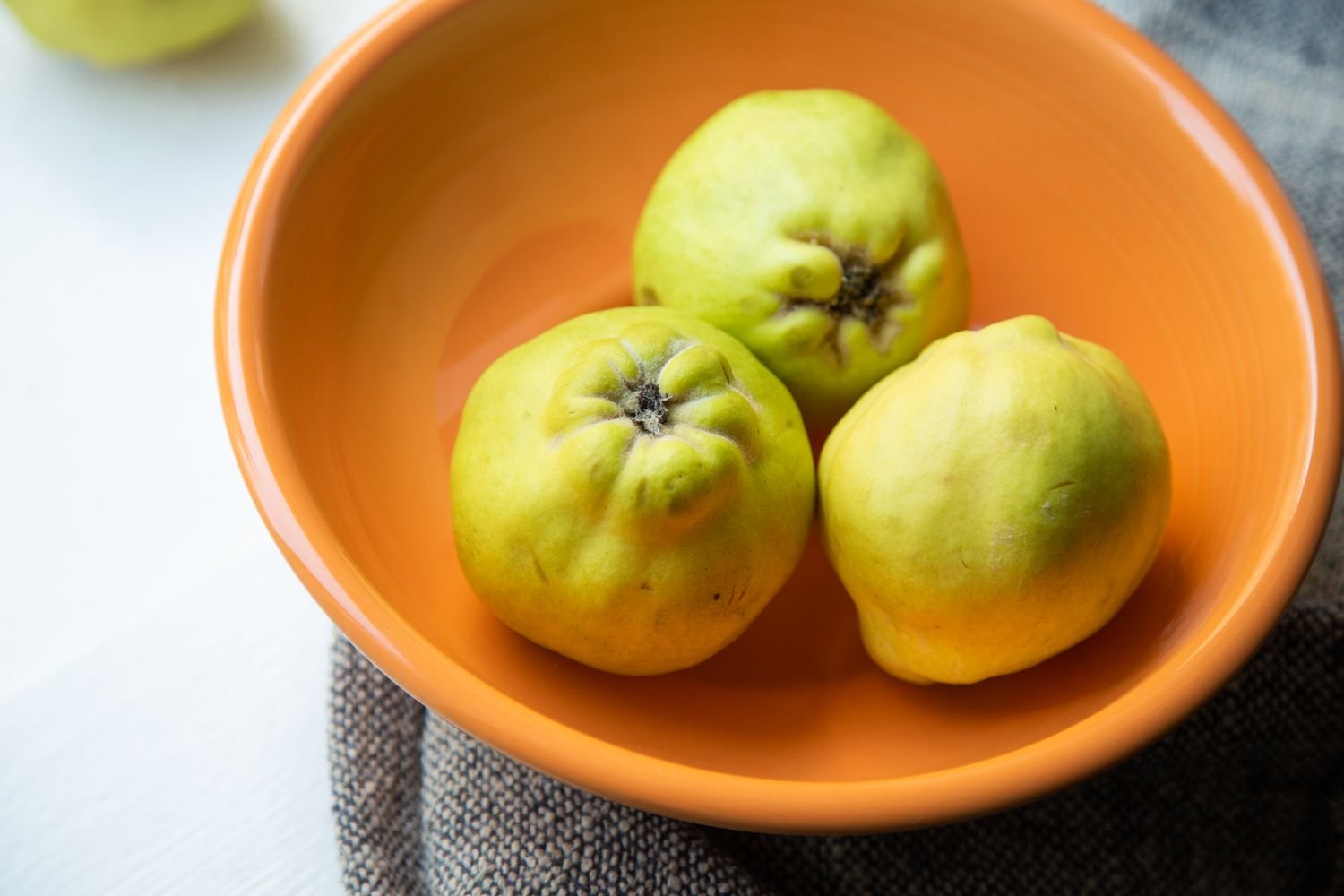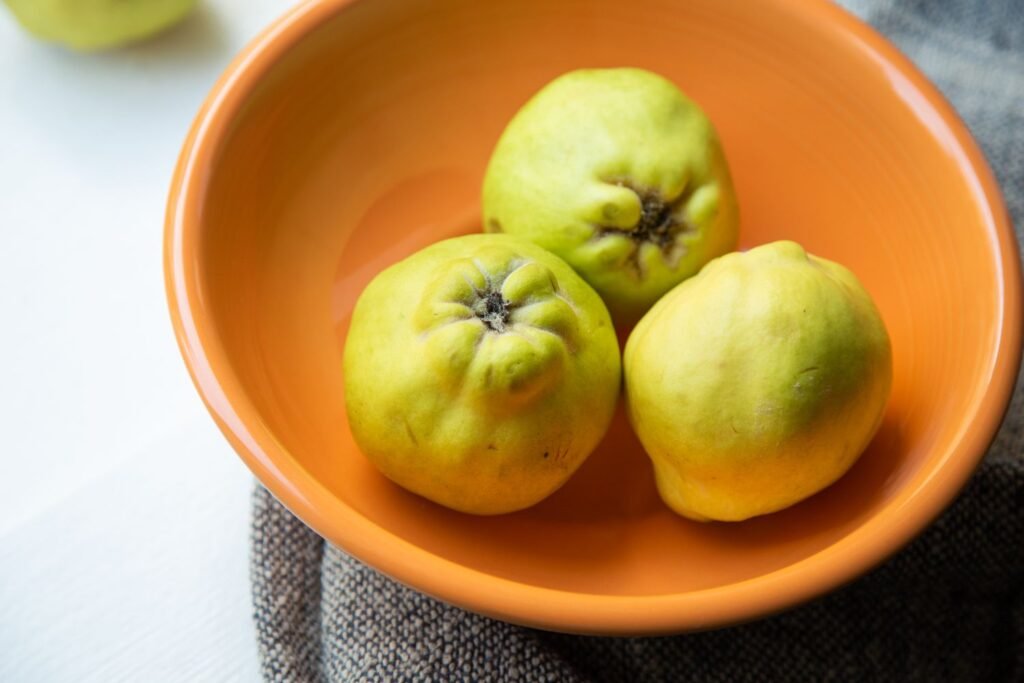Quince Fruit Facts,FAQs, Behaviour, Habitat, Conservation and more

Quince Fruit Facts | Description | Distribution and Habitat | Botany and evolution | Cultivation | Uses | Cultural | Interesting facts | frequently asked questions about Quince Fruit
Quince, a fruit that is often overlooked, is a true gem. With a fragrant aroma and a delicate, sweet-tart flavor, it is a fruit that has been beloved since ancient times. The quince is a versatile fruit that can be used in a variety of culinary applications, from savory dishes to sweet desserts. Whether you are a culinary enthusiast or simply looking to expand your fruit repertoire, the quince is a must-try fruit that is sure to delight your senses.
Taxonomy of Quince Fruit
| Kingdom | Plantae |
|---|---|
| Clade | Tracheophytes, Vascular plants |
| Clade | Angiosperms, Flowering plants |
| Clade | Eudicots |
| Clade | Rosids |
| Order | Rosales |
| Family | Rosaceae |
| Genus | Cydonia |
| Species | Cydonia oblonga |
Morphology of Quince Fruit
| Characteristic | Description |
|---|---|
| Fruit Shape | Round or pear-shaped with a short neck at one end |
| Fruit Size | 7-12 cm in diameter |
| Fruit Color | Yellow or greenish-yellow when ripe, with a slightly fuzzy skin |
| Flesh Texture | Firm and grainy |
| Flesh Color | White or yellow |
| Seed | Large, hard, and brown |
| Leaves | Simple, alternate, and deciduous with a serrated edge |
| Flowers | White or pink and appear in early spring before the leaves |
| Tree Size | Small to medium-sized, up to 5-8 meters in height |
| Habitat | Native to the Middle East and now widely cultivated in temperate regions around the world |

Description of Quince Fruit
Quince is a fruit that is often described as a cross between an apple and a pear. It has a distinct flavor that is both sweet and tart, with a fragrant aroma that is reminiscent of citrus and floral notes. The flesh of the fruit is firm and dense, making it ideal for cooking and baking. Quince is a good source of dietary fiber, vitamin C, and antioxidants, making it a healthy addition to your diet. When selecting quince, look for fruits that are yellow and fragrant, as this indicates that they are ripe and ready to eat.
Distribution and habitat of Quince Fruit
Quince is native to the Caucasus region of Central Asia and has been cultivated for thousands of years. Today, it is grown in many parts of the world, including Europe, North Africa, and North America. The fruit thrives in temperate climates and is often grown in orchards. Quince trees are relatively small and can be grown in gardens or even in pots on balconies. The fruit is harvested in the fall and can be stored for several months in a cool, dry place. In the wild, quince is often found growing in open woodlands or along forest edges.
Botany and evolution of Quince Fruit
Quince belongs to the genus Cydonia in the family Rosaceae. It is closely related to apples and pears, and the three genera are believed to have a common ancestor. The quince has been cultivated for thousands of years and has undergone a long process of domestication, resulting in the development of many different varieties with different sizes, shapes, and flavors. The wild ancestor of the quince is believed to be Cydonia oblonga, which is still found growing in the Caucasus region of Central Asia.
Cultivation of Quince Fruit
Quince is a relatively easy fruit to cultivate, although it does require some care and attention. It is typically grown from cuttings or grafted onto a rootstock. The tree prefers a well-draining soil and full sun, and it should be watered regularly. Pruning is necessary to shape the tree and promote fruit production. Quince is relatively disease-resistant but can be susceptible to pests such as aphids and scale insects. The fruit is typically harvested in the fall, when it is yellow and fragrant.
Uses of Quince Fruit
Quince has a variety of culinary uses, both sweet and savory. It is often used in jams, jellies, and preserves, as well as in baked goods such as pies, tarts, and cakes. The fruit can also be cooked and eaten like applesauce, or sliced and added to salads or roasted with meats. Quince has a high pectin content, which makes it ideal for making jams and jellies without the need for added pectin.
Cultural and Historical Significance of Quince Fruit
Quince has a rich cultural and historical significance, dating back to ancient times. In Greek mythology, the quince was associated with the goddess Aphrodite and was considered a symbol of love and fertility. The fruit was also believed to have medicinal properties and was used to treat a variety of ailments, including digestive issues and respiratory infections. In medieval times, quince was a common ingredient in sweet and savory dishes, and it was highly valued for its fragrance and flavor.
Explanatory Notes for Quince Fruit
Quince is a fruit that has been overlooked in recent years but is experiencing a resurgence in popularity. It is a versatile fruit that can be used in a variety of culinary applications, and its fragrant aroma and sweet-tart flavor make it a true gem. Quince is also a healthy addition to your diet, providing fiber, vitamin C, and antioxidants. Whether you are a culinary enthusiast or simply looking to expand your fruit repertoire, the quince is a must-try fruit that is sure to delight your senses.
Interesting facts about Quince Fruit
- The quince is one of the oldest known fruits and has been cultivated for thousands of years.
- In ancient Greece, quince was used as a wedding gift and was believed to symbolize love and fertility.
- Quince is a natural source of pectin, which is used to thicken jams and jellies.
- The fragrant aroma of quince is often compared to a mix of apples, pears, and citrus.
- Quince trees are relatively small and can be grown in gardens or even in pots on balconies.
- The fruit is high in fiber, vitamin C, and antioxidants, making it a healthy addition to your diet.
- Quince is a versatile fruit that can be used in both sweet and savory dishes.
- The skin of quince can be tough and slightly fuzzy, but it softens when cooked.
- Quince is often used as a natural remedy for digestive issues, sore throats, and coughs.
- The fruit is harvested in the fall and can be stored for several months in a cool, dry place.
General queries or frequently asked questions about Quince Fruit
Q: What does quince taste like?
A: Quince has a unique flavor that is both sweet and tart, with a fragrant aroma that is reminiscent of citrus and floral notes.
Q: Can you eat quince raw?
A: Quince is typically too tart and hard to be eaten raw, but it can be cooked and eaten like applesauce or roasted with meats.
Q: How do you know when quince is ripe?
A: Ripe quince is yellow and fragrant, and the fruit should give slightly when pressed with your thumb.
Q: What are the health benefits of quince?
A: Quince is a good source of dietary fiber, vitamin C, and antioxidants, and it is believed to have digestive and respiratory benefits.
Q: What is the best way to cook quince?
A: Quince can be baked, poached, or roasted, and it is often used in jams, jellies, and preserves.
Q: Can quince be grown in a home garden?
A: Yes, quince trees are relatively small and can be grown in gardens or even in pots on balconies.
Conclusion
In conclusion, quince is a unique and versatile fruit with a long history of culinary and medicinal uses. Its fragrant aroma, sweet-tart flavor, and high nutritional value make it a healthy and delicious addition to your diet. Whether you are a culinary enthusiast or simply looking to try something new, quince is a must-try fruit that is sure to delight your senses.












